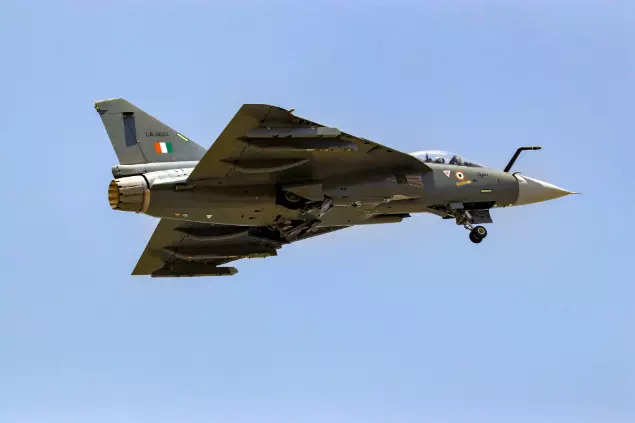It is easy enough to arrive at a figure for how much India’s gross domestic product (GDP) changed over the past decade — it has roughly doubled, or grown by an average of about 7% annually. It is much tougher to estimate by how much India’s comprehensive national power (CNP) has changed over the same period of time.
There are various metrics for doing this, each as questionable as the next one and none as reliable as calculating GDP. I will, therefore, attempt a qualitative assessment here, breaking CNP up into three broad constituent elements: military power, economic power and soft power.
A longstanding check on India’s military power has been its reliance on imports for weapons platforms and spares, which means that in a critical situation New Delhi is dependent on foreign powers replenishing these. That situation has turned dire in recent times as India’s principal supplier, Russia, has invaded Ukraine and is hard-pressed supplying even its own forces, while simultaneously growing more dependent on India’s principal adversary, China.

Fortunately, India has made decent strides in defence indigenisation over the past decade, which goes to the credit of the Modi government. According to defence ministry figures, a total of 3,700 items have been taken off the import list and sourced domestically by the end of 2022, under the Atmanirbhar Bharat initiative.
Largely indigenous weapons systems recently inducted or soon to be inducted into the Indian armed forces include the Tejas light combat aircraft, Kolkata and Vishakapatnam class stealth destroyers, the aircraft carrier Vikrant and the Arihant nuclear submarine.
Figures from the Stockholm International Peace Research Institute (SIPRI) indicate the advance in indigenisation over the past decade: Indian defence imports went down by 11% during 2018-22, compared to 2013-17. However, SIPRI also reports “India was the world’s biggest importer of major arms in 2018-22, a position it has held for the period 1993-2022”. Indian arms imports amounted to a whopping $23.1bn over 2018-22.
A good beginning
While the government has succeeded in knocking heads together within the defence establishment to speed up indigenisation projects, and also involved the private sector in this enterprise, there is still considerable way to go down this path. Arguably, however, it has achieved an initial impetus. It has also done well to use its growing proximity to Washington to craft a plan for defence-industrial cooperation, which includes a proposal to share technology for fighter jet engines from General Electric.
Growing military power can be sustained only with the help of growing economic power. Here, India has done well to maintain, over the past decade, the faster pace of growth it has gotten used to since the 1980s.
Unlike China or the East Asian tigers, India does not do spectacular growth. But it has proven its resilience by doing stable growth over the long term. It is more an elephant moving at a steady, stately pace — it does not run like a tiger but is hard to stop. And that inspires confidence.

The past decade has also seen stepped up infrastructure buildout across the country, including building of roads, highways, Metros, ports and airports. For instance, India had a total of 97,830km of National Highways in 2014-15, which expanded to 145,155km by 2023 — a creditable enhancement of about 50% in a decade. In the same period, it also doubled its rural road network.
According to the International Energy Agency, 45% of India’s electricity transmission lines have been installed in the past decade. Equally creditable has been the drive to build India’s digital infrastructure which, combined with greater access to bank accounts and financial services, has led to much higher efficiencies in the delivery of welfare services.
Cause for concern
While all this infrastructure buildup augurs well for India’s future economic growth, there are some dark clouds on the horizon as well. Household savings as a proportion of GDP have hit their lowest point in the past 50 years, which is a sign that inflation is getting out of control. Agricultural growth was a mere 0.7% last year, and farmers are restive.
Most of India’s labour force operates in the informal sector where there are no job contracts or social security. Employment on a day-to-day basis also means few opportunities for training or skill improvement. A stunning 35% of Indian kids below the age of five are stunted, according to data compiled by the National Family Health Survey.
This is not really the kind of human resource with which one creates a “developed India”. According to some reports, inequality in India today surpasses inequality under the British Raj. This creates challenges for growth down the line as well, because industry requires a large number of well-heeled customers to consume its products.
The international trading regime is fragmenting, which creates risks as well as opportunities for India. It may be in a geopolitical sweet spot as the West attempts to balance China, and India is the only other country with comparable scale.
The Indian economy could benefit from “friend-shoring” as Western firms try to produce goods outside China and Russia. This is where Indian soft power comes in. But that, unfortunately, is on the decline.
Image takes a hit
It is best to clear up a category confusion here. Many Western leaders are courting India for the geopolitical reasons cited above, and Prime Minister Narendra Modi and external affairs minister S Jaishankar too have responded by manoeuvring New Delhi closer to the West. Since many in India lay great store by India’s image in the West, all of the above leads them to believe that India’s global soft power is on the up and up.
Pew polling of the global image of countries indicates, however, that India’s image has generally been in decline over the period 2007-23. Among countries polled, India’s attraction has declined for France, Spain, Brazil, Germany, Poland, Indonesia, UK, South Africa and South Korea, while it has gone up only for Nigeria and Mexico (although even at the upper end, only 42% of Mexicans have favourable views of India currently).

Western media coverage of the upcoming Lok Sabha election is not so much about India’s democratic vibrancy as its democratic backsliding. A paper published by think tank Chatham House has warned “an erosion of India’s democratic credentials … may prompt the West to review the nature and limits of its cooperation with India”.
Bollywood, once a source of great Indian soft power, has been pressed into a hyper-patriotic mode that sometimes plays up Hindu-Muslim conflict — aligning it with the ruling party’s ideology. This kind of material cannot appeal abroad, and Bollywood is losing audiences even at home.
It is unwise to disregard soft power. In pure hard power terms, China puts India in the shade, but arguably India is still ahead in terms of soft power (Pew polls attest that Chinese soft power has been declining more rapidly than India’s). Many in India tend to overestimate how much the world needs India, and even superpowers like the US must rely on soft power.
A balanced approach, therefore, must emphasise both hard and soft power. Else that old saw about Brazil would apply to India as well: Brazil is the country of the future, and always will be.
Read more from the author here.
